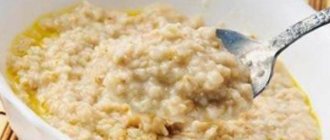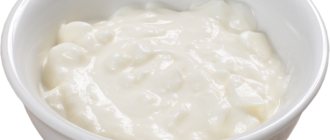Benefit
Pickled ginger contains many substances and vitamins necessary for the normal functioning of the body. Ginger root is called the root of life for all the positive effects it has on the human body. Pickled root is no exception.
The beneficial properties of pickled ginger are as follows:
- Improved digestion.
- Increased intestinal muscle tone.
- Elimination of signs of flatulence, treatment of seasickness.
- Destruction of intestinal parasites.
- Increased blood flow to the brain, improved blood circulation.
- Analgesic effect, you can take the product for headaches and toothaches.
- Increased performance and body tone.
- Acceleration of metabolism, fats are burned much faster when consuming ginger.
- Slowing down the aging process.
- Prevention of cancer development.
- Antibacterial effect, increasing the body's resistance to the influence of microorganisms.
- Reduced blood sugar levels.
- Warming effect, strengthening the immune system.
- Relieving nervous tension, anxiety, and panic symptoms.
- Anti-stress effect.
- Strengthening the walls of blood vessels, preventing the occurrence of blood clots.
- Improving the functioning of the cardiovascular system.
Ginger slows down the natural aging of the body, improves skin condition, and evens out complexion. It restores energy, including sexual energy, and organizes prevention for a variety of diseases of internal organs. Soothes, warms, gets rid of bacteria and parasites. The product is added to sushi and rolls made from raw fish precisely because of its antiparasitic and antibacterial properties.
Benefits for women and men
For women, pickled ginger has a beneficial effect on the reproductive system. With its help, you can cure infertility, increase the tone of the uterine muscles, and facilitate menstruation. For men, the product is no less useful: it improves potency and prevents the development of inflammatory processes in the prostate gland. Regular consumption of ginger will protect against impotence and speed up sperm movement. For couples planning to have children, this root, either on its own or in pickled form, should become an indispensable element of the diet.
Pickled ginger: benefits and harms
Ginger is highly revered in the east, and for its beneficial qualities it is placed in second place of honor after ginseng root. The Chinese, Japanese, Thais and Indians use it almost daily in cooking. In Europe, ginger is known more as an additive to Japanese cuisine and as a seasoning for some dishes. Let's consider what pickled ginger brings - benefits and harm?
Pickled ginger: application
In addition to the fact that ginger is an excellent addition to a variety of types of dishes, it can be used for a variety of purposes. Ginger has long been used as an antiviral and anti-cold remedy; in addition, it is an excellent antioxidant and pain reliever. If you feel unwell or have a headache, just eat a portion of pickled ginger - it can significantly help your condition.
In Asia, it is believed that it enhances female fertility and male power, so it is recommended to be used by couples who want to have children or make their intimate life more passionate and vibrant.
In addition, ginger is used as a remedy for cellulite and helps in the fight against extra pounds.
Like other products, pickled ginger is fraught with both benefits and harm. In particular, the latter will be seen by those who began to take the plant despite contraindications. These include:
- stomach and duodenal ulcers;
- diarrhea;
- gallbladder diseases;
- colitis;
- liver diseases.
If all this has nothing to do with you, and you are not allergic to ginger, you have nothing to fear, this root vegetable will not harm you.
Pink and white pickled ginger
These two types of ginger differ only in color, which depends on the marinade recipe. To give the pinkish color, some use rose wine, and some use regular beets. Otherwise it is the same product.
Calories in Pickled Ginger
There are only 51 calories per 100 grams of pickled ginger. In addition, when consuming this product from sushi, an ordinary person eats no more than 50 grams. It can be safely included in the diet, as it speeds up metabolism and promotes weight loss.
Can pregnant women have pickled ginger?
Regular ginger is recommended for pregnant women in the early stages to eliminate toxicosis, although in this case it is usually taken in capsules. As for the pickled root, it can only be eaten during the first and second trimester: in the later stages it can cause premature labor, so it is better not to risk it.
womanadvice.ru
Harm
Is pickled ginger useful in every case? No, the product has a number of contraindications, which include some stomach diseases, as well as inflammation of the liver and gall bladder. If you have temporary stomach upsets, you shouldn’t eat it either, it will have negative consequences.
The product is good only in moderation, as a supplement and seasoning. If you eat it in large quantities, there may be negative consequences for the human body. Abuse is fraught with the following side effects:
- Heartburn.
- Diarrhea.
- Nausea and vomiting.
- General weakness.
- Allergic rash with itching.
If these symptoms are noticed after consuming pickled ginger root, you should stop taking it. If symptoms are active and do not stop for a long time, you should contact your doctor.
Pickled ginger. Benefits and harms, recipe
Beneficial properties of pickled ginger
In fact, the beneficial properties of pickled ginger can be summarized as follows:
- naturally fermented pickled ginger is a source of prebiotics, it is beneficial for digestion and helps improve the health of intestinal flora;
- this product allows you to diversify your diet and get a general strengthening effect;
- ginger has mild laxative and diuretic effects;
- ginger essential oils enhance the taste of certain dishes and contribute to greater satisfaction from meals;
- ginger improves immunity, contains fiber, and, finally, it is simply delicious.
Some popular websites say that pickled ginger enhances...charm. Apparently, this refers to the olfactory sensations, and not the ability to attract people and make friends. One way or another, eating ginger is recommended in folk medicine to avoid bad breath.
Pickled ginger is a folk remedy for motion sickness and so-called “seasickness.” It is recommended to simply keep a piece of it in your mouth during a particularly exhausting journey. Indeed, moderate consumption may suppress nausea. It is often recommended to eat pickled ginger root when you have a cold.
It is often written that ginger can replace multivitamins from the pharmacy. This is not true, of course, because the root is not complete in composition and does not contain most of the B vitamins. But properly prepared ginger root can be an additional source of vitamin C.
It is often written that pickled ginger is a real remedy for weight loss. Of course, this story is nothing more than an exaggeration. You can chew the root before meals, but it will only work for those people for whom all this causes appetite suppression. There is no rigorous evidence that pickled ginger helps burn fat. Studies have been conducted, the results of which have proven that ginger, in fact, can be considered a thermogenic. Its use literally “warms up” the body and speeds up metabolism. But the effect is insignificant. You can burn about 40 kcal per day this way. This is not enough for serious weight loss.
However, pickled ginger can be a good choice in that it adds variety to your diet. But it is variety that is often lacking for people who adhere to a certain diet and exercise. This improves the quality of life. As a result, a person becomes less obsessed with food intake and simply has a healthier relationship with food. And this helps to reduce appetite and reduce the likelihood of a breakdown. Any healthy person who counts calories to lose weight can include ginger in their diet. After all, this product is one of those that is eaten in quantities not exceeding 30 g. So there is no need to be afraid of high calories.
Pickled ginger, however, is more of a seasoning and less of an independent product, so it is important not to overuse it. And yes, it contains sugar. So you will have to decide whether it is useful to you or not.
Pickled ginger recipe
- For 170 g of root cut into “petals” or “shavings”, take 50 g of Japanese rice vinegar, 2 teaspoons of salt and 3 tablespoons of sugar;
- Place the ginger in a deep ceramic bowl, heat the rice vinegar and dissolve salt and sugar in it. Pour the marinade over the ginger, leave to cool and marinate;
- The product is ready for use after 6 hours.
For people who don't eat sugar, pickle ginger in rice vinegar with a little salt and then add a little water with sweetener for taste.
Ginger sometimes gets its pink color with the help of the most basic food coloring - red beets.
Pickled ginger prepared according to this recipe is placed in a glass jar and can be stored in the refrigerator for 3-4 months.
Harm of pickled ginger
Any adult understands that pickled ginger must be dosed in your diet. No matter how useful prebiotic bacteria are, by the way, there are not too many of them in ginger and vinegar. And to be completely honest, they may not be there. Traditional gari, which is prepared by fermentation, is sold extremely rarely in our country. At home, you are unlikely to find a way to cook ginger in a wooden barrel and wait a month for it to ferment there.
The popular appetizer with vinegar and sugar is, of course, tasty and complements the taste of the food, but it should not be taken as a full-fledged side dish. Abuse of such food is no different, for example, from excessive consumption of gherkins or any other green products. You may well eat this, but this does not mean that swelling from increased salt intake, and the whole range of problems associated with excess sugar in the diet, will not affect you.
How to determine how much ginger to eat? The usual “doses” are no more than 10 g per day. Some people eat up to 30, but here you need to take into account the total amount of salt and sugar in the diet.
When purchasing ginger in a supermarket, you should carefully read what it was prepared from. You can buy a product today with a bunch of preservatives, unnatural coloring and no rice vinegar at all. What to do, cooking this way is much cheaper, and for many manufacturers profit is primary.
Pickled ginger is not recommended for gastrointestinal diseases. All types of diets that prohibit saltiness and pickles should exclude this product too. It should not be abused for stomach upsets or immediately after diarrhea.
Pickled ginger contains sugar, so it should be excluded from the diet of all people who limit this product. This applies to diabetics, patients with metabolic syndrome and obesity.
The product is not suitable for baby food, and it cannot be used in the diet of a pregnant woman, according to most doctors. Although the same Japanese women usually do not exclude him. But here a big role is played by who is used to what food. And it is important to simply not significantly change your diet while in this state.
Pickled ginger can cause the same complex of allergic reactions as a regular, fresh product. Therefore, you should avoid it if you are allergic to ginger root.
And, naturally, ginger can retain fluid in the body, so you should not overuse it if the goal is to have the most slender silhouette.
As for folk recipes, each person decides for himself how to treat them. The same “bad breath” can be caused by both a banal dental problem and gastrointestinal diseases. Therefore, you should be quite careful when self-medicating with ginger.
Calorie content of pickled ginger 51 kcal
Energy value of pickled ginger (ratio of proteins, fats and carbohydrates):
Protein: 0.2 g (1 kcal) Fat: 0.3 g (3 kcal) Carbohydrates: 12.5 g (50 kcal)
Energy ratio (BZHU): 2%/5%/98%
Vitamins and minerals contained in pickled ginger
Vitamins:
A - 0.015 mg, B2 - 0.19 mg, B1 - 0.046 mg, C - 12 mg.
Minerals:
sodium - 32 mg, iron - 10.5 mg, zinc - 4.73 mg, potassium - 1.34 mg, calcium - 58 mg, phosphorus - 74 mg, magnesium - 92 mg.
Read other interesting articles on the topic:
your-diet.ru
Dietary properties
Pickled ginger is very useful for weight loss. It significantly speeds up metabolism and forces the human body to burn fat faster. At the same time, digestion is normalized, and the entire gastrointestinal system begins to function better. With this product you can improve your overall health, return to normal physical shape and live much longer.
To lose weight with pickled ginger, you don’t need to go on any strict diet. It’s enough just to start regularly taking this seasoning in small quantities to speed up your metabolism and lose a lot of extra pounds. They won't come back. Of course, if you do not forget about proper nutrition and adding foods such as ginger root to your diet.
The product reduces the amount of sugar in the blood. Therefore, it can be used by patients with diabetes and obesity. In addition, it can be added to the diet of patients with digestive disorders, respiratory diseases and chronic bronchitis. When creating a therapeutic dietary menu, you must first consult with your doctor and take into account the presence or absence of contraindications.
Contraindications
Pickled ginger has contraindications for use. It should not be used in the following cases:
- Pregnancy and lactation period.
- Peptic ulcer disease.
- Colitis.
- Diarrhea.
- Individual intolerance.
- Inflammation of the gallbladder.
- Liver diseases.
If there are contraindications, ginger should be avoided. If you experience discomfort when consuming it, consult a specialist: you may belong to one of the above groups of patients.
Chemical composition of the product
The following describes how many kilocalories (Kcal) are in pickled ginger, what its BZHU and KBZHU are, what vitamins and micro and macroelements the product contains.
Vitamins
- B vitamins (B1, B2, B4, B5, B6, B9).
- Vitamins E, K, C, PP.
- Alpha Tocopherol.
- Choline.
- Folates.
- Acids (folic, pantothenic, nicotinic).
KBJU per 100 grams
- Calorie content - 42.12 kcal.
- Proteins - 0.51 g.
- Fats - 0.40 g.
- Carbohydrates - 11.88 g.
Micro and macroelements
Microelements:
- Iron.
- Manganese.
- Copper.
- Selenium.
- Zinc.
Macronutrients:
- Potassium.
- Calcium.
- Magnesium.
- Sodium.
- Phosphorus.
Is it possible for pregnant and lactating women
During pregnancy and lactation, experts recommend avoiding the use of pickled ginger. Tea based on ginger root, as well as adding it as a seasoning to some dishes in small quantities, are allowed. But you shouldn’t consume pickled stuff even a little.
Pickled ginger can increase internal bleeding during menstruation and can cause miscarriage in the first trimester of pregnancy. In the remaining trimesters it can also cause abnormal development of the fetus. And when feeding, it can cause allergic reactions in a newborn who is not yet ready for such a seasoning.
The nutritional value
Nutritional value per 100 grams
| protein | 9.2 g |
| fats | 5.9 g |
| carbohydrates | 70.9 g |
Most of the chemical composition of pickled ginger contains carbohydrates.
There is little protein and fat. The nutritional value is high, but since ginger cannot be used as a main dish or even a full-fledged snack, it does not affect the formation of excess weight and satiety. But all proteins, fats and carbohydrates are perfectly absorbed by the human body. Chemical composition per 100 grams
| Vitamin C | 12 mg |
| Vitamin B3 | 5.2 mg |
| Vitamin B4 | 0.04 mg |
| Vitamin A | 0.01 mg |
| Vitamin B2 | 0.01 mg |
| Magnesium | 184 mg |
| Phosphorus | 148 mg |
| Calcium | 116 mg |
| Sodium | 32 mg |
| Iron | 11.5 mg |
Pickled ginger retains almost all the beneficial substances and vitamins that the fresh root contains. Marinating allows you to preserve microelements and vitamins, while improving the taste of the product itself.
The root is rich in vitamin C and B vitamins. It also contains calcium, iron, phosphorus, magnesium, and many other microelements necessary for human health. In addition to elements and vitamins, the composition contains organic amino acids that are necessary for material metabolism, but are not synthesized naturally in the body. It is thanks to its rich chemical composition that the product has so many positive effects on humans.
Pickled ginger is a universal remedy!
Today, sushi is a very popular dish, and it is very difficult to find a person who has not tried it at least once. This means that everyone knows pickled ginger, which is an indispensable and very important element in serving all Japanese dishes. Japanese cuisine uses various pickled vegetables depending on the time of year, but pickled ginger is on the table at any time of the year. Thanks to pickling, the harsh taste of ginger is softened, but its beneficial properties are not reduced. The benefits of pickled ginger are enormous.
What are the benefits of pickled ginger?
Pickled ginger contains minerals (magnesium, zinc, phosphorus, calcium), vitamins (C, B2, A, B1), amino acids and a lot of other substances necessary for the human body. Its benefits include stimulating digestion, warming, strengthening the immune system, helping to easily cope with colds, cleansing the liver, thinning the blood, relieving headaches and nervousness. There is an opinion that the beneficial properties of pickled ginger make it possible to use it for losing weight and maintaining youth. The main thing is to prepare it correctly so that the calorie content of the dish is not too high.
Unfortunately, it is physically impossible to eat a lot of ginger raw, and if you add it dry to baked goods and drinks, only the taste will change and the healthfulness of the dish will not increase. The best method to make the most of its beneficial properties is to pickle the plant. Pickled ginger does not lose its specific pungency, but rather acquires a soft consistency and pleasant taste.
Varieties of Ginger
There are 2 types of this plant: beni-shoga and gari. They cannot be prepared in the same way, and their areas of application are different. The first is served with various meat dishes, noodles, okonomiyaki and never with sushi. This type of plant is served instead of pickled vegetables in order to give the dish a burning taste and stimulate digestion. This pickled ginger can be eaten in large quantities, and no one will remark to you that you do not understand Japanese cuisine. Both types of plants do not harm the body, of course, if they are prepared correctly.
The second type is gari, served with sushi in small thin slices. But this pickled ginger is not a snack. It is more of a means of refreshing, “cleansing” the taste before a new dish. Therefore, it is eaten separately and in small quantities. World gastronomy has recognized that gari is a unique product, the only one that can overwhelm the taste without causing harm to the body. Coffee beans in perfumery, which make it possible to refresh the perception of new aromas, are the closest analogy to burning.
But how can these types be distinguished from each other if, for example, you don’t know Japanese characters? Everything is very simple. They differ in the list of ingredients and appearance, but both have beneficial properties. The first difference is not difficult to identify, because the composition must be translated. Gari is a young plant, and beni-shoga is quite mature. We cannot say exactly how much each type costs, because the price depends on the region of sale. But it is clear that gari is more expensive than beni-shoga.
Luckily, you can make your own pickled ginger. If you bought young roots of the plant, just chop them finely, pour rice vinegar and add salt and sugar to taste. Get fresh pickled ginger gari. If only mature roots of the plant are on sale in your city, you can only prepare pickled beni-shoga ginger, which is also quite good. Choose thick, hard, smooth roots with thick skin for pickling. Vinegar is the main component of the marinade. If you cook everything the Japanese way using plum or rice vinegar, the color of the ginger will not change.
How many calories are in ginger?
Depending on the food form of the plant, the number of calories may vary. How many calories are in ginger also depends on the amount of water contained in the plant. The raw root has the following energy value: 80 calories per 100 grams of product. And pickled ginger generally contains only 60 kcal, thereby being inferior to its counterpart. The leading position is occupied by dried ground ginger root, whose calorie content is 335 kcal per 100 grams of product. But it is used only as a seasoning, so it is simply impossible to eat it and thereby harm the figure.
It has not been officially proven that the root can burn fat, but its constant consumption still has a beneficial effect on weight loss. Perhaps this is due to the fact that the product is low in calories. In addition, when losing weight, such beneficial properties of ginger as regulating digestion are important. This promotes better absorption of substances necessary for the human body. In addition, the plant cleanses the liver of toxins and waste, preventing intestinal parasites from growing and multiplying. The benefits of the “horned root” also include improving metabolism. All these beneficial properties of the plant together contribute to weight loss, particularly in the abdominal area.
Don't overdo it
If the beneficial ginger root is abused, its harm can be fully manifested. Do not think that if you add ginger to tea and all dishes, it will greatly enhance your immune system or help you lose all the excess weight, such actions will only harm your body. The benefits of essential oils are great, but in large quantities they can lead to inflammation of the stomach, heartburn, allergic reactions and teeth on edge. Pickled ginger is not recommended for diabetics.
Well, now you know what ginger is, in particular pickled ginger, what beneficial properties it has, how many calories this plant contains, how to properly prepare ginger and what harm it can cause. We hope the information was useful to you. All the best!
pro-imbir.ru
How to use
Pickled ginger is consumed in small quantities for disinfection. The Japanese offer it with sushi without fail: the dish is prepared from raw fish, which can contain parasites and bacteria. Eating ginger can immediately destroy all these harmful organisms. And at the same time eliminate bad breath and add a dish to your taste as a seasoning.
Storage
You can store pickled ginger in a closed container for 3-4 months. After opening, the shelf life is sharply reduced to 20 days. The same period applies to ginger pickled at home. During this time, the product must be consumed; later it will be unusable, lose its taste and lose its medicinal properties.
Storage temperature should be from +1 to +25 degrees. The storage location is dark, not exposed to direct sunlight. The best storage option is the refrigerator. Small jars and trays can be kept directly on the door. Must be stored in airtight packaging. For homemade ginger root in marinade, select a glass container with a lid.
How to choose
You can find pickled ginger not only in sushi bars, but also in any supermarket. To choose a good product, you need to pay attention to the color of the root in the jar. It should be yellowish white or pale pink. A bright color indicates that the manufacturer used artificial or natural dyes in order to attract the attention of the consumer. This bright pink ginger is often found in cheap sushi bars.
You also need to look at the expiration date. Pickled ginger can be stored for 3-4 months. If the package indicates a long period of time, it means that preservatives were used during preparation. You should refrain from buying such ginger.
Why is pickled ginger pink?
When properly pickled, the Asian root vegetable changes its color from yellow to pink. This change can be caused by premium quality Japanese rice vinegar. If you see pink pickled ginger on store shelves, this is not a guarantee that it was prepared with the addition of rice vinegar. To achieve the desired result, it is enough to use E124 dye. It is painted only so that it blends perfectly with other products. This dye does not affect its taste at all.
Pickled ginger is a source of beneficial vitamins. If you want to be young, beautiful and healthy, then by all means try to do it with the help of this miracle spice!
What goes with it?
You can combine pickled ginger in your diet with the following products:
- fish;
- seafood;
- any greens;
- vegetables, both fresh and baked or grilled;
- meat, sausages.
Pickled ginger allows you to reduce the calorie content of the finished dish, so it is often used in dietary foods. It perfectly complements meat, fish and vegetable dishes, and goes with a variety of side dishes. But, according to tradition, the product is best served with Japanese sushi, rolls and other dishes.
How to take pickled ginger for weight loss
The product is not suitable as a stand-alone weight loss product. It is recommended to use pickled ginger on a diet after meals to reduce appetite and speed up the elimination of fat. You can eat it for lunch and dinner, or add it to salads. Ginger goes well with low-calorie diets - meat, fish, protein, vegetables, cottage cheese.
If a person feels the urge to have a snack 1-1.5 hours after a meal, nutritionists advise satisfying hunger with a ginger slice. In this case, calorie content will not affect weight, and it will be easier to adhere to the nutritional system. Along with the product, you need to drink a sufficient amount of clean water - at least 2 liters per day. If there is a lack of fluid, waste will be retained inside the body, and problems with stool will arise.










